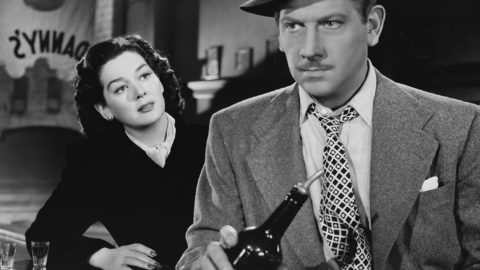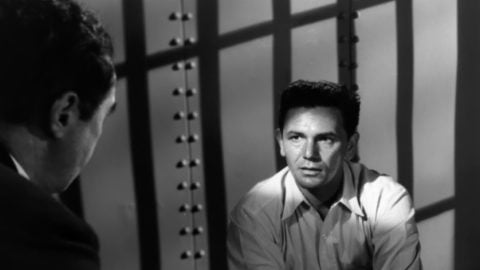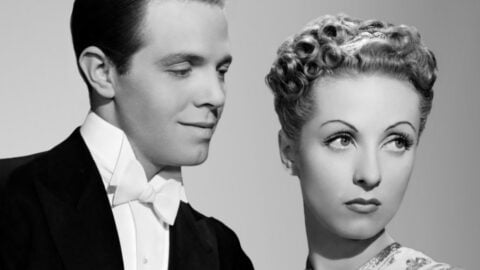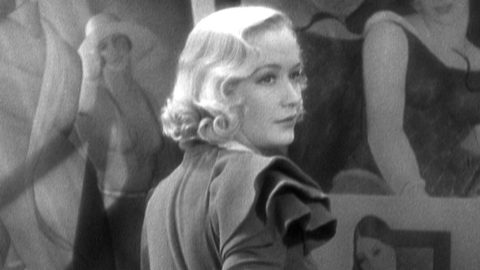TCM Diary: The Mosjoukine Effect
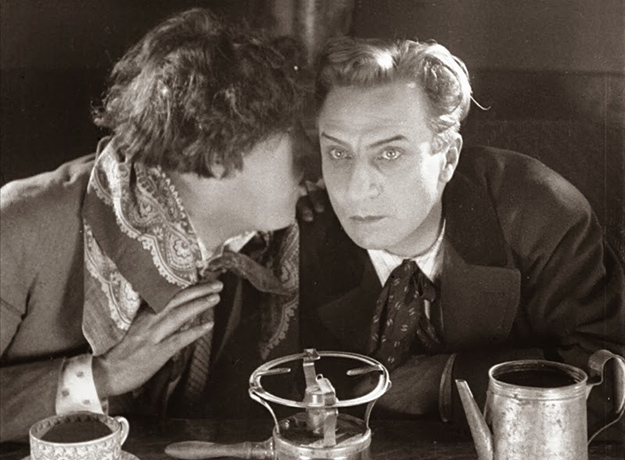
The Late Mathias Pascal
It is ironic that the Russian actor Ivan Mosjoukine may be remembered best—if at all—as a footnote in film history: the star whose face was used to demonstrate the Kuleshov Effect. Soviet film theorist Lev Kuleshov spliced the same close-up shot of Mosjoukine with different images—a bowl of soup, a dead child, a reclining woman—and reported that audiences were convinced his expression was different in each close-up, reading appropriate emotions into what is described (the original film does not survive) as his “expressionless” or “impassive” face. The experiment thus demonstrated the power of montage, and incidentally suggested that a great film performance might be more a matter of the audience’s interpretation than the actor’s effort.
The irony is that Ivan Mosjoukine had one of the most expressive and mercurial faces in cinema; it would be hard to find a shot of him looking impassive. With his aquiline profile and luminous eyes, their glance at once knife-sharp and fever-bright, he could project brooding intensity and fierce passions, but he also had a playful, goofball side that put him almost in a class with the silent clowns. Born Ivan Mozzhukhin in 1889, he was a star during the Tsarist era before joining a group of White Russian émigrés who fled to France in 1919 and formed the company Films Albatros. Under its banner he worked with experimental French directors like Jean Epstein (The Lion of the Moguls, 1924) and Marcel L’Herbier, collaborations that marked a brief, improbable overlap between avant-garde and popular cinema. Also for Albatros, Mosjoukine wrote and directed The Burning Crucible (1923), a deliriously surreal romp in which he multiplied himself onscreen, playing eleven different roles, and moving from expressionist nightmare to absurdist satire. It was the film Jean Renoir cited as igniting his determination to make movies.
In L’Herbier’s Feu Mathias Pascal (The Late Mathias Pascal, 1926), Mosjoukine’s quicksilver energy is unleashed by the title character’s identity crisis. Twice presumed dead, Mathias Pascal revels in the freedom and suffers the torments of being a man without a name or a past. At one point, he splits onscreen into two versions of himself, who regard each other with belligerent distaste. A lesser actor might have been overwhelmed by the sheer scale and visual spectacle of the film, which was based on a novel by Luigi Pirandello. Exteriors were shot on location in Rome, Monte Carlo, and the medieval town of San Gimignano, with its fantastic skyline of rectangular stone towers and maze of narrow walled alleys. Interiors were designed by future director Alberto Cavalcanti, assisted by the young Lazare Meerson, who would go on to be the art director for René Clair’s enchanting The Italian Straw Hat (1928), Under the Roofs of Paris (1930), and À Nous la Liberté (1931). For Feu Mathias Pascal, they created dreamlike corridors of nesting archways and a cavernous, dilapidated library where Mathias toils amid dusty, rat-infested heaps and piles of books.
These places are infused with the moods of the story, seeming less like design-for-design’s-sake than the gargantuan art-deco fantasias in L’Herbier’s L’Inhumaine (1924) and L’Argent (1928). In the beginning, the shy dreamer Mathias is oppressed by heavy, dark, ancient rooms, no less than by his heinous mother-in-law and a crooked lawyer who cheats his widowed mother out of her estate. When his mother and his adored baby daughter die on the same day, the weight of his grief seems to bow down the ceiling of the chamber where he mourns. In a sudden, exhilarating cut, this lugubrious scene gives way to the camera zooming along train tracks, veering off to take in the sea glittering like crushed glass in the sun. In Monte Carlo, the casino where Mathias gambles his way to a fortune is filled with crowds who move in unison like automatons; in a fancy hotel lobby, women in shimmering gowns drift like shoals of fish.
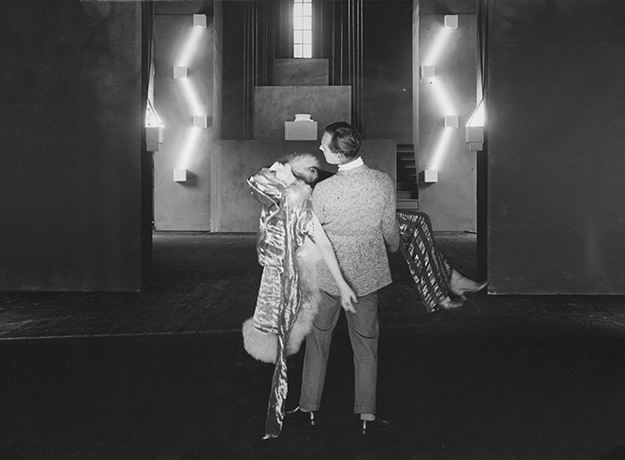
L’Inhumaine
Essentially passive despite his obsession with freedom (he totes around a manuscript of his life’s work, “The History of Liberty”), Mathias lets himself be ruled by chance. Learning from a newspaper that he has been mistakenly declared dead in his hometown, he seizes the opportunity to start afresh, arriving in Rome and re-christening himself Adrien after developing an instant crush on a girl named Adrienne (Lois Moran). The bare, whitewashed room he rents is fittingly stocked with books about reincarnation and communication with the dead. Adrienne is menaced by a sinister con man (Jean Hervé) and an operatically drunken, fraudulent medium. Mathias realizes that without an official identity he can’t interfere to help her, and his frustration prompts outbursts of violent fantasy, like the fight with his double or a hilarious moment when he leaps on his rival and throttles him in luxurious slow motion.
The film is full of such playfulness, which relieves its great length and occasionally languid pacing. Radical shifts in tone and setting mirror the protagonist’s chameleon nature. L’Herbier has fun with extreme long shots—the tiny figure of Mathias sprinting in a zig-zag down massive Roman stairways—and extreme close-ups, like the charming shot of Mathias’ and Adrienne’s hands during a séance, creeping together and intertwining in a kind of finger orgy. Throughout, Mosjoukine matches the film’s pyrotechnics with his own wit and élan. His acting can be heightened and stylized—savage, hysterical laughter, soulful tears, balletic gestures—or winningly natural, as when Mathias plays with his baby daughter, all goofy sweetness, or when he gleefully bounces and does head-stands on the bed. He recalls Buster Keaton when he solemnly tries on hats in a mirror or shyly inches toward a girl on a bench, and suggests John Barrymore in his uninhibited relish for melodrama.
Perhaps Mosjoukine was too complex a persona for Hollywood to grasp. He was summoned to Universal by producer Carl Laemmle in hopes he might be another Valentino, but the single movie he made there (1927’s Surrender) was a humorless flop that miscast him as an imperious Cossack rapist; soon after, the coming of sound destroyed any possibility of stardom in America for a non-English speaker. Back in France he continued to act in the 1930s, but his heyday was over, and he died of tuberculosis in 1939. Feu Mathias Pascal marked the film debuts of two actors who would go on to glory: the slender, wild-eyed Pierre Batcheff, future star of Un Chien Andalou (1929) and Rene Clair’s delightfully offbeat comedy Les Deux Timides (1928); and a clean-shaven young Michel Simon, as a fatuous dandy with a fluffy bob that turns him into a dead ringer for Max Beerbohm’s grotesque caricatures of Oscar Wilde.
Restored by the Cinémathèque Française—of which L’Herbier was once president, though he clashed with Henri Langlois and didn’t last long—the print of Feu Mathias Pascal has an unearthly clarity and incandescence, shining through delicate washes of color tinting. The rediscovery of the Albatros films reveals the wildly fertile cross-pollination of Russian and French cinema thanks to refugees from the Revolution—one of those happy outcomes of history’s dark forces. Pirandello’s theme of reinvention in the wake of tragedy and the practical jokes of fate is a perfect fit for the displaced Ivan Mosjoukine. His own screenplays suggest a fascination with the slipperiness of identity, and as an actor he seems uncannily conscious of being a creature of celluloid, subject to the whims of the camera and the editor’s shears—like someone in a dream, where everything is possible but nothing is under control.
Feu Mathias Pascal airs December 3 on Turner Classic Movies. The restoration is also available in a Blu-ray from Flicker Alley.
Imogen Sara Smith is the author of In Lonely Places: Film Noir Beyond the City and Buster Keaton: The Persistence of Comedy, and has written for The Criterion Collection and elsewhere.



